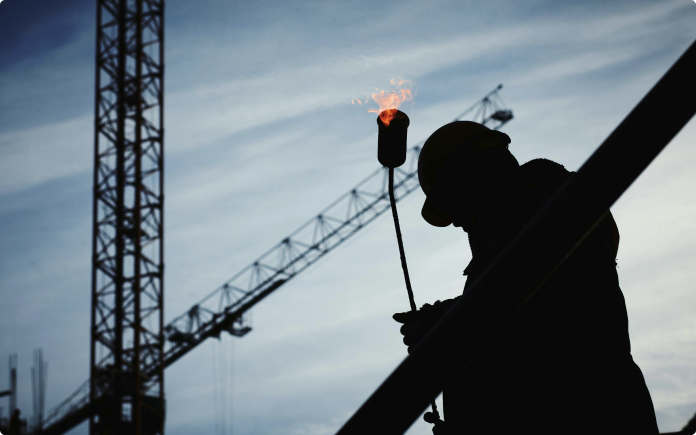30 July, 2025
Written by REGA ENERGY
Reading time: 3 min
Decarbonising Industry, Sector by Sector: Unlocking the Potential of the Glass Industry
Glass is a material with unique characteristics and immense potential. Green hydrogen and oxygen, as well as biomethane, are renewable energy sources that could transform this industry and contribute significantly to its decarbonisation.
Found in everyday objects and essential across a wide range of sectors — from architecture and construction to science, medicine, and technology — glass stands out for its remarkable versatility. It also offers superior durability and an excellent ability to preserve product quality, particularly through packaging that does not transfer contaminants to food. One unique feature sets it apart: glass is infinitely recyclable and reusable.
In this sense, glass embodies sustainability. The figures speak for themselves: one tonne of used glass can be reused to produce exactly one tonne of new glass. Through a circular production process, the material is continuously recycled without losing its properties. This not only reduces the need to extract raw materials, but also significantly lowers the thermal energy required for production — as the melting point decreases with higher levels of recycled content.
In the past 50 years, glass has become 30% lighter and now uses 70% less energy
While these characteristics are already impressive, the path the glass industry has taken to maximise the “green” potential of this material speaks for itself: today, glass products are 30% lighter, use 70% less energy, and emit just 50% of the CO₂ they did 50 years ago. Still, there is much to be done in a sector where fossil fuels continue to play a major role in the production process.
The European Union’s economic model, based on a clean and circular economy and formalised in the European Climate Law, sets the target of achieving carbon neutrality across the continent by 2050 — with an interim goal of reducing emissions by 55% by 2030. In February 2024, the European Commission proposed an even more ambitious target: a 90% emissions reduction by 2040, as part of the European Green Deal.
Solutions for decarbonisation
Decarbonising the glass sector will continue to rely on continuous innovation in product eco-design, greater use of recycled glass in manufacturing, and the adoption of alternative raw materials with lower carbon footprints, powered by renewable energy. Electrifying the production process is one of the most promising pathways for replacing fossil natural gas, and it can be further supported by oxy-combustion systems and renewable gases.
A successful energy transition across Europe towards a low-carbon economy will require substantial investment in infrastructure for renewable energy generation and distribution. The European glass industry has already identified several initiatives to adopt disruptive decarbonisation technologies — but these advances must not compromise the competitiveness of the final product.
Technologies such as fully electric or hybrid furnaces (with electrification potential of up to 80%) demand significant capital investment and still carry some uncertainty regarding their operational lifespan. This means gas will likely continue to play a major role in glass manufacturing — making renewable gases like green hydrogen and biomethane essential and complementary tools in the sector’s decarbonisation journey.
Renewable energy as a vector for decarbonisation
Biomethane is a near-perfect substitute for fossil natural gas. It is fully compatible with existing gas-fired equipment and, by extension, with industrial processes — like glass manufacturing — that rely on natural gas. Because of this compatibility, there are no limitations on injecting biomethane into existing gas networks, and its production does not need to be located near the end user.
Green hydrogen production, on the other hand, depends primarily on the availability of electricity, water, and physical space for the installation of electrolysis modules. These modules can be scaled up gradually over time. However, because hydrogen has only limited compatibility with natural gas, it is ideally produced close to where it will be consumed, with delivery via dedicated pipelines. This is crucial for industrial users that require high volumes and flow rates to decarbonise efficiently and at scale.
Given the geographical concentration of the glass industry, it is particularly well positioned to benefit from “green hydrogen valley” models — where renewable hydrogen can complement industrial decarbonisation by directly replacing fossil gas in high-temperature production processes.
Sources:
AIVE – https://aive.pt/embalagens-de-vidro/beneficios/
Glasshallmark – https://glasshallmark.com/the-furnace-for-the-future-the-glass-industrys-shared-ambition-for-a-low-carbon-future/
Newsroom
Information that matters.
Our mission is to accelerate the advent of a sustainable industry.
Read more about what we are doing in our Newsroom.

